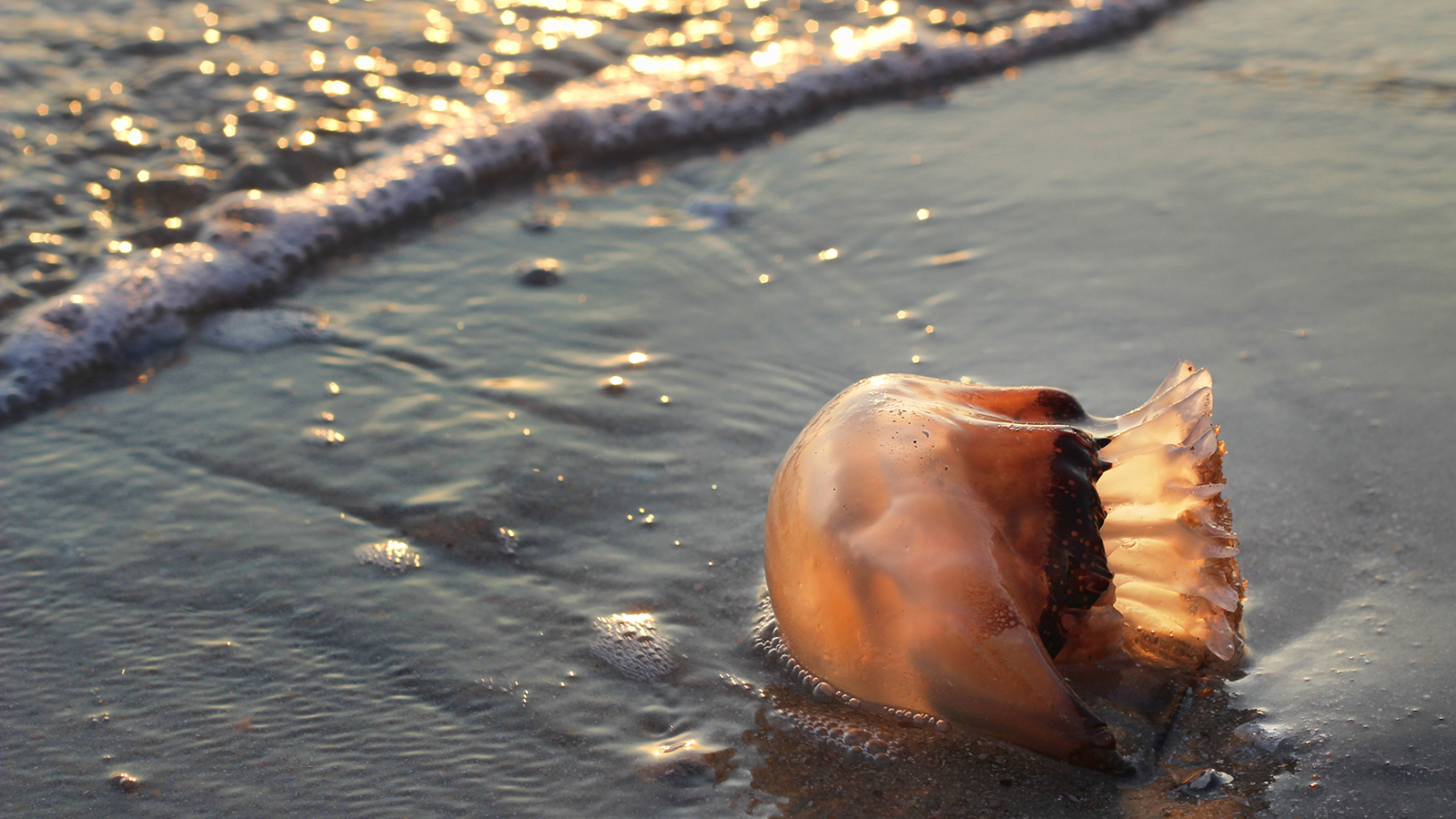When you come across a slick of jellyfish packed bell-to-tentacle into an area the length of five or six city blocks, you may sense something is wrong with the picture. Massive jellyfish blooms have been sprouting more and more often in recent years, one even reaching 1,000 miles long, for reasons mysterious but generally agreed to be bad.
But where there’s a fork, there’s a way! If we can focus all the energy we’re using to overfish more conventional ocean edibles on jellies instead, maybe we stand a chance at pruning the bloom to a more manageable size. Apropos, Modern Farmer reported recently on U.S. fishermen in a tiny port in Georgia who are trawling for cannonball jellyfish, otherwise known as — wait for it — “jellyballs.”
First of all, what do you call it when you fish for jellyballs? Is it jelly-balling? Please, please let it be jelly-balling. From Modern Farmer:
“Jellyballs have been very, very good to me,” says [one fishing boat owner, Thornell] King, who has worked as a state trooper for the last 20 years, and might be the only jelly-balling cop in the country. This past season was particularly robust: King and his men caught an estimated 5 million-plus pounds of cannonball jellyfish. At what King says is this year’s price (seven cents a pound), this equates to $350,000. Statistics are absent in this burgeoning new industry, but … the market value of the jellies being fished in the U.S. can be estimated at somewhere in the low millions.
Yessss! Jelly-balling!
And what, pray tell, does one do with 5 million pounds of jellyballs? Typically, the answer is to dry them out and ship them to Japan and China, where they are rehydrated, cut into strips, and tossed into delicious salads. Apparently, prepared correctly, the brined jellies are crunchy “like a carrot.”

John DreyerJellyball, the carrot of the sea?
Not enough to whet your appetite? Then try this for sauce:
And as climate change and the global industrial agriculture system continue on what many view as a doomed course, we may have no choice but to eat foods that make sense ecologically — or can at least thrive in a changed environment. Jellyfish, prolific breeders with low metabolic rates and the ability to eat almost anything (some breeds just ingest organic material through their epidermis), have survived in unfriendly environs for centuries.
I’ve been a proponent of eating invasive species before, and as ocean ecosystems are stressing out more delicate denizens, jellyfish are a hardy bet. That being said, if greener protein is your goal, you might be better off with crickets; jellyfish are made up of a little protein and salt floating in more than 95 percent water.
American foodies have been slow to champion the jelly cause, but if we could learn to eat sushi, we can learn to eat anything.
If you’ve made it this far and are still hungry for more jellyball, the Modern Farmer article is mouth-watering.




